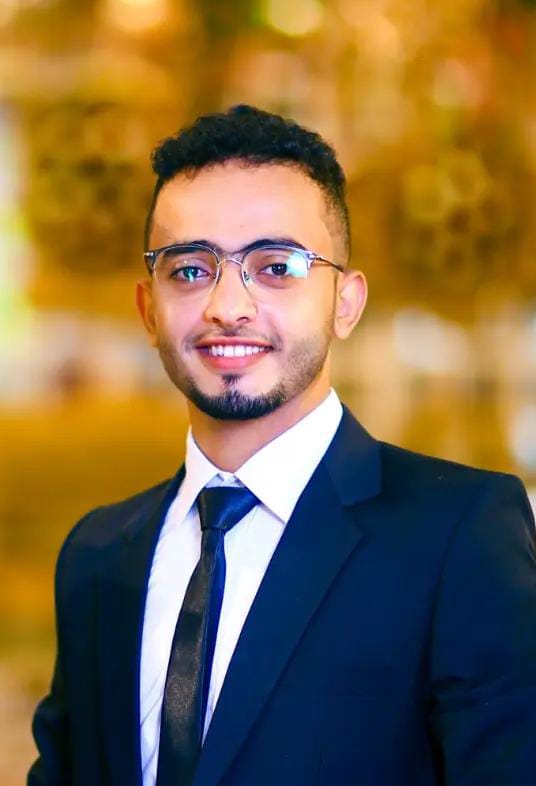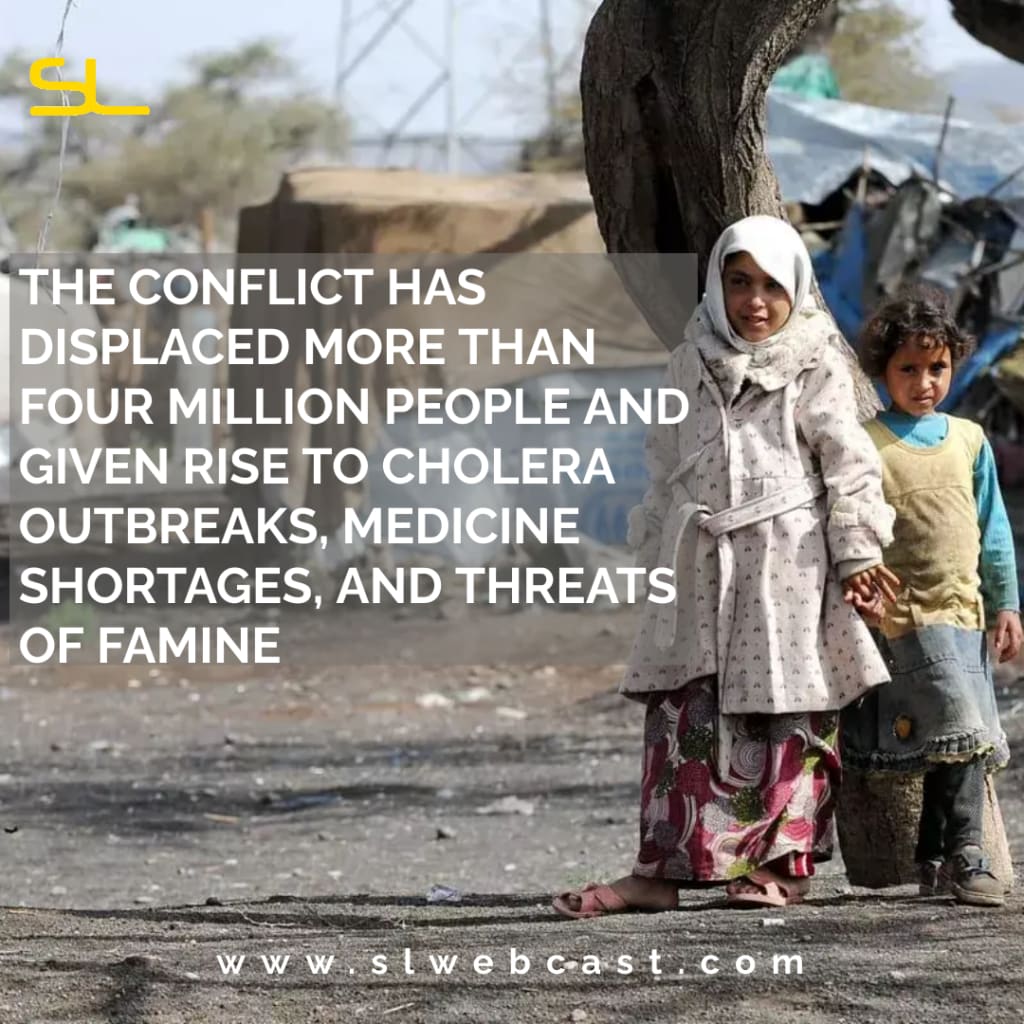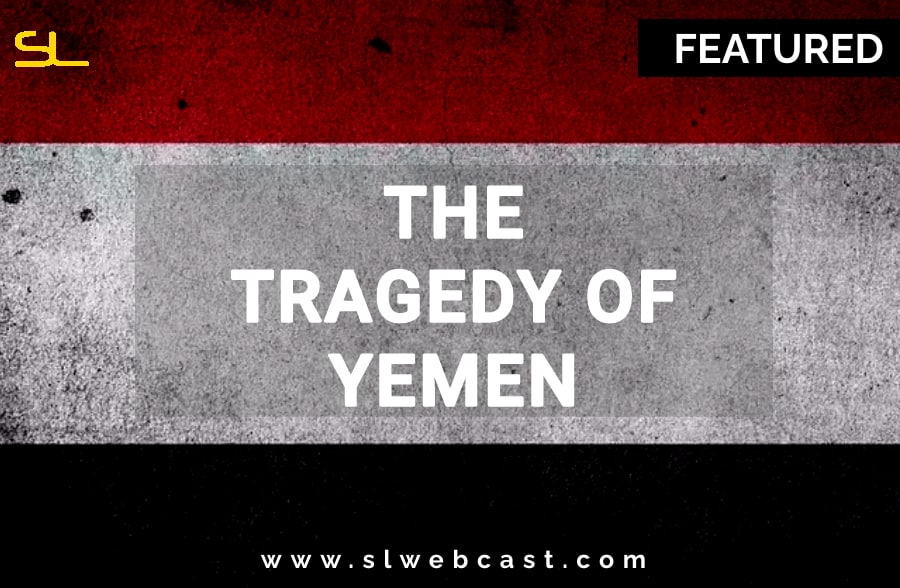
Recently our Editor-in-Chief, Mr Abdul Thawwab Ishaque interviewed Mr Mohammed Abdulkareem Mahdi a Yemeni, whose hometown is Taiz, a city in Yemen regarding the current situation in Yemen. He spoke about how the problems started and how it is going on.
Initiating with the first question,
How did the tragedy start?

Yemen, a small country on the Arabian Peninsula, has become the site of grievous civilian suffering amid an intractable civil war. Many analysts say the fighting, now seven years old, has turned into a proxy war: Iran-backed Houthi rebels, who overthrew the Yemeni government, are pitted against a multinational coalition led by Saudi Arabia. The involvement of other combatants, including militant Islamist groups and separatists backed by the United Arab Emirates (UAE), has complicated the picture.
The conflict has displaced more than four million people and given rise to cholera outbreaks, medicine shortages, and threats of famine. The warring parties observed a monthslong cease-fire in 2022, raising hopes for a political solution to the conflict, but that October, they failed to extend the truce.
Most of the places are under the Al – Huthis for more than 7 years, also mentioned Huthis say they are the sons of the Prophet Mohammad. According to this situation, the Government and the People who live in Yemen face many struggles with it. Also, the Government faces many battles with the Huthis to protect the country and themselves.
What are Yemen’s divisions?
Yemen has long struggled with religious and cultural differences between its north and south and the legacy of European colonialism. The modern Yemeni state was formed in 1990 with the unification of the U.S.- and Saudi-backed Yemeni Arab Republic, in the north, and the Soviet-backed People’s Democratic Republic of Yemen, in the south. Ali Abdullah Saleh, a military officer who had ruled North Yemen since 1978, assumed leadership of the new country.
But between the two parts of the country, it is hard to communicate with each other because the duration between the two places is seven hours. Yet, there are many conditions for travelling from one to the other side. Even though travelling in the city is also not as manageable as ordinary. Because it takes long periods.
What caused the current crisis?
Mahdi explained how they’re suffering from the economic barrier too. All the necessary things are very high-priced. Specifically, food, clothes, Grocery items, Study materials, etc, Therefore overcoming their lives is also tricky.
Several factors widened these political divisions and led to full-scale military conflict.
Under pressure from the International Monetary Fund, which had extended to Yemen a $550 million loan premised on promises of economic reforms, Hadi’s government lifted fuel subsidies in 2014. The Houthi movement, which had attracted support beyond its base with its criticisms of the UN transition, organized mass protests demanding lower fuel prices and a new government. Hadi’s supporters and the Muslim Brotherhood-affiliated party al-Islah held counterrallies. So surviving in this awful territory is harder.
Although there is some bias between the people according to their financial status. They are called ‘High-class people’ by society. Only the high-class people receive essential requirements. It means only they can get water, fuel for their vehicles, food, etc. So the situation of the common man is a question mark as to what he said.
What can be the solution to this crisis?
UN-backed peace negotiations have made limited progress. The 2018 Stockholm Agreement averted a battle in the port city of Hodeidah, a vital hub for aid; but there has been little success in implementing the accord’s provisions, which include the exchange of more than fifteen thousand prisoners and the creation of a joint committee to de-escalate violence in the city of Taiz.
Observers worry that friction among regional actors, including Iran, Saudi Arabia, and the UAE, is prolonging the war. Conditions deteriorated in late 2019 when the Houthis claimed responsibility for a missile attack on Saudi oil facilities. UN monitors concluded that the Houthis did not carry out the attack, while the Saudi-led coalition blamed Iran.
Peace efforts gained momentum in April 2022 when Yemen’s new governing council helped consolidate anti-Houthi forces, a move that could set the stage for inclusive negotiations. Later that month, the Houthis and coalition forces coordinated their first nationwide cease-fire in years, which allowed commercial flights to resume from Sanaa and some fuel ships to dock in Hodeidah. The parties extended the truce several times, but after six months of relative peace, failed to renew it again. Both the Yemeni government and the Houthis have blamed each other for the disintegration of the deal, which could lead back to heavy fighting and plunge Yemen into a full-scale crisis.
What are the impacts of the Yemen civil war?
To save the country, the government’s military suffers a lot. That means that they can’t meet their families, friends, etc. Because the duties of soldier’s duties are so distant from their native places.
Mahdi tells of his current situation in his country, he worries about the wars and their impacts. Largely, there were many horrible flight accidents while innocent people travelled. Yet another worrying matter is people are not allowed to walk on the lane independently. Because Israeli military armies shoot them while they walk along the streets, especially children and women.
During the battleground because of the bomb blasts, most of the people lost their legs, hands, and visual and hearing skills. So they are pushed with many disabilities.
The protracted conflict in Yemen has led to urgent, widespread humanitarian and development crises and resulted in significant damage to the economy, physical infrastructure, service provision, health, and education systems, as well as the social fabric. It has also caused hundreds of thousands of deaths. While many of these are the result of war’s direct violence, others are due to the war’s indirect effects, including a lack of food and degraded living conditions.
By comparing the current reality in Yemen to a scenario where no conflict ever occurred, we can provide an estimate of the total death count – the number of deaths caused both directly and indirectly by the competition. By doing so, we found that by the end of 2021, Yemen’s conflict will lead to 377,000 deaths – nearly 60 per cent of which are indirect and caused by issues associated with conflicts like lack of access to food, water, and healthcare.
These deaths are overwhelmingly made up of young children who are especially vulnerable to under and malnutrition. In 2021, a Yemeni child under the age of five dies every nine minutes because of the conflict. This is a significant increase since our 2019 report, Assessing the Impact of War on Development in Yemen, that – through the same assessment – found this to be approximately every 12 minutes.
How is the life of a Yemenis child?

No one can understand what life is like for children growing up in conflict. For children to be well, they need to feel safe and loved, and to have their basic needs met. They need to be cared for by their family and to be supported by their community – for example, through school. But for millions of children living in conflict zones, these critical needs are unmet. The impact of conflict on children’s health – both physical and mental – is devastating.
Each airstrike, siege, and grave violation can have serious negative consequences on children’s mental health and well-being, now and for years to come.
Most of the children from Ta’izz work from a young age to look after and maintain their families and themselves. The hardest truth and the reason for this are be due to losing their parents in the wars.
- The Impact on Children’s Mental Health
While the conflict in Yemen threatens the physical health of children, it also poses a grave risk to their mental well-being.
In a survey by Save the Children, more than half of children said they struggle with feelings of sadness and depression, with more than one in ten feeling that way constantly. Around one in five of the surveyed children said they are always afraid.
Children have lost loved ones to bombs and diseases, they see violence around them every day, and they are afraid their brothers and sisters won’t return from school. The constant psychological strain manifests itself in many ways: for example, 56% of children don’t feel safe when walking alone, 16% of children say they are never or rarely able to relax, and 38% of caregivers reported an increase in the children’s nightmares.
It is estimated that approximately 24 million children living in conflict zones around the world today could be experiencing high levels of stress and have mild to moderate mental health. An additional 7 million children are at risk of developing severe mental health disorders.
- Right to education in Yemen
More than a quarter of children are not educated in Yemen, and this lack of education affects girls more often than boys.
Furthermore, the establishments are seriously unhealthy, the structures are extremely insufficient and in poor condition. Consequently, children’s health and hygiene suffer in these schools, where very often there are no bathrooms or recreational areas.
The presence of armed forces in the country makes travel to school difficult and dangerous. The children are terrified at the idea of crossing the roads in Yemen to go to school. The parents, who are often just as frightened as their children, often let them stay at home.
Schools are also the target of threats from armed groups, who don’t hesitate to intimidate the opposing parties by pointing their guns at the schools.
To assure the security of the children, certain schools don’t have any choice except to close, preventing the children from enjoying their right to education.

- Child labour
Labour is an everyday reality for around 23% of children between 5 and 14 years old in Yemen. The prevalence of forced labour in this country is all the more serious, as the abuse of these children is abundant. From sexual exploitation to slave treatment, these children are the objects of cruelty and malice. Their health, physical as well as mental, their security, and their development are drastically affected.
Mahdi added his idea on the steps that can help overcome the tragedy.
The first step to address this tragedy is to end the fighting. But, unfortunately, the parties in the conflict and their regional backers are keen on escalating the conflict further rather than finding a solution. If the fighting over the last seven years holds any lesson, it is that there can be no military solution to Yemen’s problems. To dial down tensions, there have to be talks, not only between the rebels, separatists, and the government but also between their backers — Iran, the UAE, and Saudi Arabia. If these regional powers agree to rein in their proxies and work towards rebuilding Yemen, that would also help them restore stability and security in the Arabian peninsula.
The conversation was concluded, and Mahdi was honoured and grateful for giving him the opportunity to bring to attention his society and the nation.


